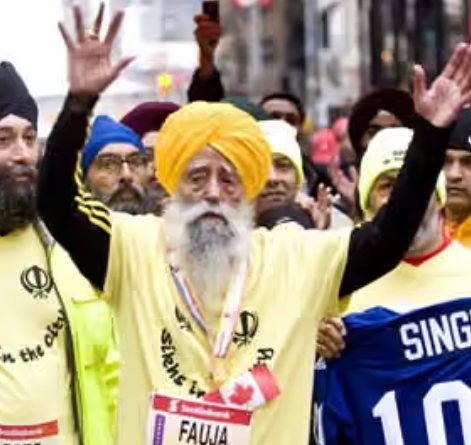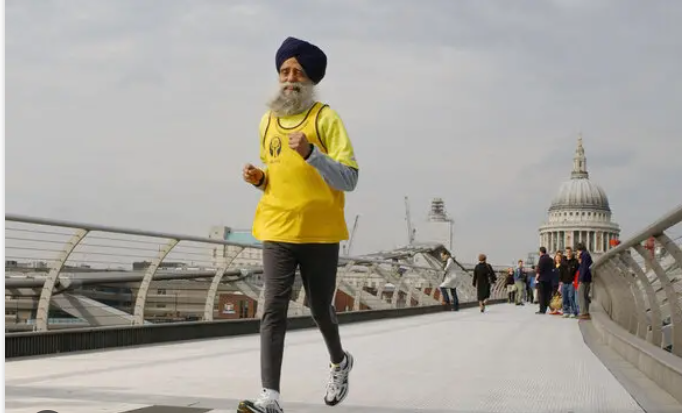
He was known as the “Turbaned Tornado,” a name that perfectly captured the whirlwind of energy and inspiration that was Fauja Singh. Earlier this year, the world's oldest marathon runner tragically passed away at the age of 114 after being struck by a vehicle in his native village in Punjab, India. While his age wasn't officially ratified by Guinness World Records due to the lack of a birth certificate from 1911, his British passport and a congratulatory letter from Queen Elizabeth II on his 100th birthday told a story of a life that defied conventional limits.
Fauja Singh’s journey into the world of running is as remarkable as his age. He only began his athletic career at the age of 89, seeking an outlet for his grief after the loss of his wife and son. This late-in-life passion would see him become the first centenarian to complete the Toronto Waterfront Marathon, a feat that catapulted him to international fame. He became a symbol of resilience and a testament to the idea that it's never too late to start something new. His story wasn't just about running; it was about the indomitable human spirit.
But what was it about Fauja Singh that allowed him to not just live a long life, but to live it with such vitality? While his genetics undoubtedly played a role, his life offers profound lessons for the rest of us on how to age with grace, strength, and a smile. Two of the most visible and powerful lessons from his life are the importance of posture and the consistent practice of exercise.
The Upright Path to Healthy Aging: The Power of Posture

One of the most striking things about Fauja Singh, besides his incredible endurance, was his posture. In a world where many of us are hunched over desks and devices, he stood as a powerful example of uprightness. Good posture is far more than just looking confident; it's a cornerstone of healthy aging.
Maintaining a proper posture as you age has a cascade of benefits. It improves balance and mobility, which is crucial for preventing falls—a major concern for older adults. When you stand and sit tall, you're engaging your core muscles, which in turn provides better support for your spine and reduces the risk of back pain. Furthermore, an upright posture allows your lungs to expand fully, improving your breathing and ensuring your body gets the oxygen it needs to function optimally. This can lead to increased energy levels and even better cognitive function.
Conversely, poor posture can contribute to a host of age-related problems, including chronic pain, restricted breathing, and digestive issues. Over time, slouching can lead to a forward head posture and a rounded upper back, which not only affects your physical health but can also impact your mood and self-esteem.
The Engine of Youth: Exercise and Neurogenesis
Fauja Singh didn't just walk; he ran. And in doing so, he was tapping into one of the most powerful anti-aging tools available: exercise. Regular physical activity is a well-documented elixir for a longer and healthier life. It strengthens the heart, helps maintain a healthy weight, and preserves muscle mass and bone density.
But the benefits of exercise extend far beyond the physical. It has a profound impact on our brains. Research has shown that regular, moderate-to-intense exercise can slow brain aging. It does this in part by promoting neurogenesis, the creation of new neurons, particularly in the hippocampus—a brain region critical for learning and memory. This means that every time you go for a brisk walk, a run, or engage in other forms of exercise, you're not just working your body; you're actively building a more resilient and youthful brain.
For older adults, a balanced exercise routine that includes aerobic activity, strength training, and balance exercises is recommended. This combination helps to maintain cardiovascular health, muscle strength, and stability, all of which are essential for an active and independent life.
The Foundation of Movement: The Importance of a Healthy Gait
It's not just about whether you walk or run; it's also about how you do it. Your gait—the way you walk and run—is fundamental to your long-term health. A proper gait ensures that you move efficiently, minimizing stress on your joints and muscles and reducing the risk of injury.
For runners like Fauja Singh, an efficient gait was essential for covering long distances without breaking down. But even for those of us who are not marathoners, a healthy walking gait is crucial. It contributes to better balance, reduces the risk of falls, and can even be an indicator of our overall health. Learning and maintaining proper posture and a healthy gait are investments in your long-term well-being, allowing you to stay active and mobile for years to come.
Fauja Singh's life is a powerful reminder that age is not a barrier to incredible achievements. His story is not just one of athletic prowess, but a blueprint for a life lived to the fullest. By embracing the principles of good posture, regular exercise, and a commitment to moving well, we can all aspire to a longer, healthier, and more vibrant life—a life with the spirit of the “Turbaned Tornado.”
